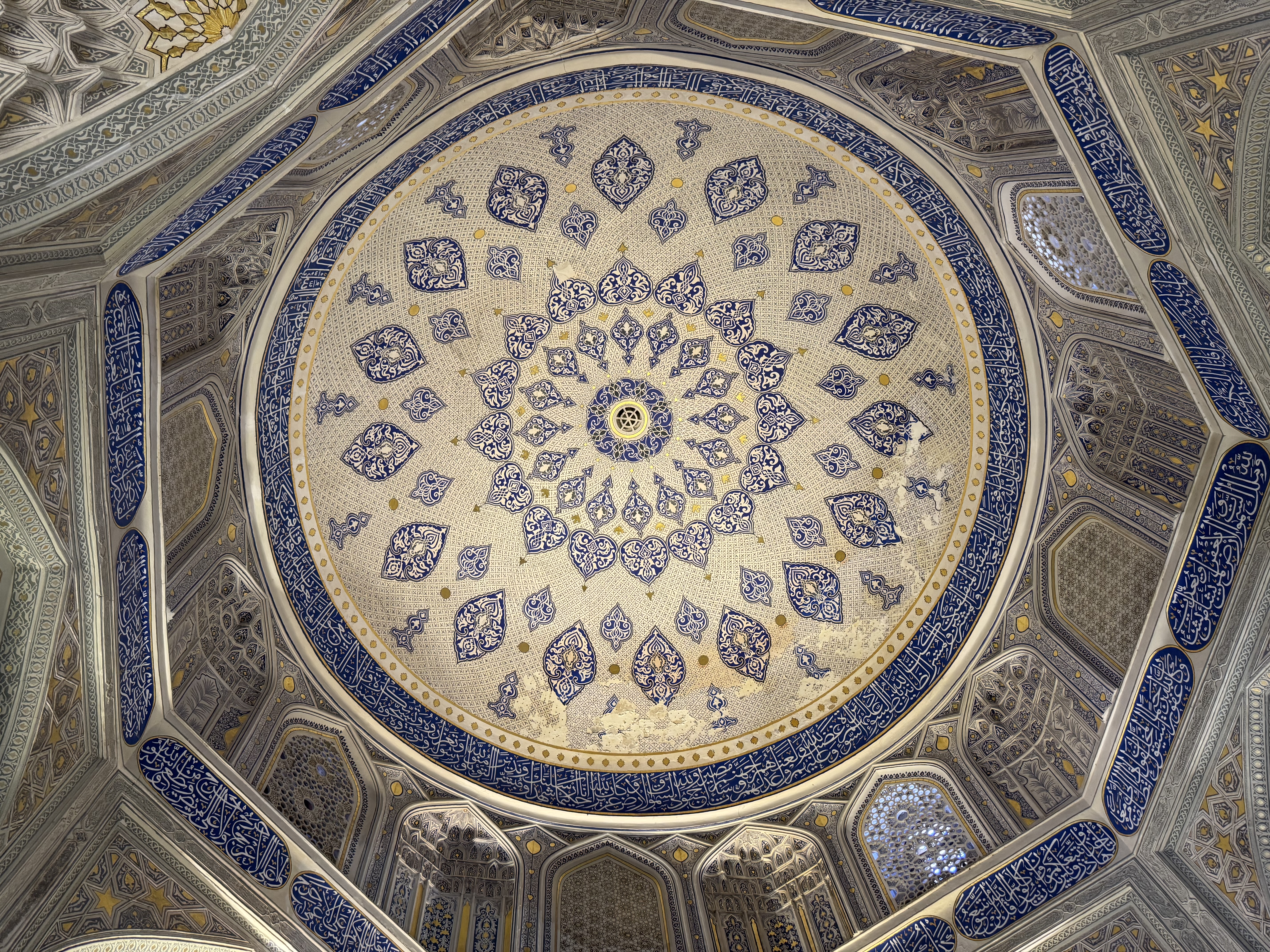A Dream Journey: Uzbekistan and Kazakhstan with Mum 🇺🇿🇰🇿

Samarkand, Uzbekistan, May 2025
In May 2025, Mum and I had the extraordinary privilege of embarking on a journey we had long dreamed of—a visit to Uzbekistan and Kazakhstan, two remarkable countries at the crossroads of ancient civilisations, empires, and cultures. The trip turned out to be everything we hoped for and so much more: a deeply moving, enlightening, and at times unexpected adventure through places that have shaped the world in ways we are only now beginning to fully appreciate.
It was a fantastic journey in every sense—emotionally rich, culturally fascinating, and made all the more special by sharing it with Mum. We travelled through Tashkent, Samarkand, and Shymkent, crossing borders, braving the intense Central Asian heat, and constantly being amazed by the warmth of the people we met.
Samarkand – A Jewel of Human Civilization
Without a doubt, the crown jewel of our trip was Samarkand. A city of almost mythical reputation, Samarkand exceeded every expectation. It is one of the oldest continuously inhabited cities in the world—its roots going back to the 7th century BC—and once served as a vital centre on the Silk Road, the ancient trade network connecting China with the Mediterranean.
Walking through Registan Square, surrounded by the towering, tiled facades of three madrasahs, we were left speechless. The intricate Islamic art, symmetry, and colour were not only beautiful but deeply symbolic, evoking centuries of learning, spirituality, and cross-cultural dialogue. We felt like we had stepped into a living history book—only more vivid, more moving, and more inspiring than any text could convey.
We were particularly touched by how much of the world’s scientific and philosophical heritage has roots here. Figures like Ulugh Beg, the 15th-century astronomer and mathematician who built one of the greatest observatories of the medieval world, were central to the development of astronomy. Scholars in Bukhara and Samarkand were translating, preserving, and expanding on the knowledge of antiquity while much of Europe was still in the Dark Ages. This legacy—of scholarship, discovery, and humanism—filled us with admiration and humility.
To stand in a city where knowledge was once a currency more powerful than gold felt both inspiring and sobering. It reminded us how interwoven our global history truly is, and how much we owe to civilisations we often overlook in Western narratives.
Shymkent – An Unexpected Favourite
After crossing the border by foot—a messy but memorable experience, particularly for Mum, who handled it with patience and curiosity—we arrived in Shymkent, Kazakhstan. While not a “classic beauty” like Samarkand, Shymkent surprised and impressed us in ways that lingered long after we left.
There was something deeply authentic about Shymkent. It bears clear traces of its Soviet past—monolithic apartment blocks, wide boulevards, remnants of faded ideological murals—but this resonated with us as Poles. We recognised that strange blend of melancholy and resilience, and it made the city feel oddly familiar.
What truly won our hearts in Shymkent was our guide, Larisa—a brilliant, kind-hearted Kazakh-Russian woman whose depth of knowledge was matched only by her warmth and humanity. With quiet dignity and great insight, she helped us understand not only the region’s history, but also the social and emotional layers left behind by communism, independence, and rapid transformation. Her stories, humour, and grace stayed with us and added a profound human dimension to this part of our trip.
Tashkent – Surprising and Elegant
We began and ended our journey in Tashkent, Uzbekistan’s capital, and what a surprise it was. We had expected a functional, possibly overwhelming post-Soviet metropolis. Instead, we discovered a clean, spacious, and remarkably well-managed city that felt truly designed with its residents in mind.
Tashkent is a fascinating blend of tradition and modernity. The city’s metro system—decorated with artistic mosaics, chandeliers, and architectural flourishes—is not just efficient, but beautiful, like a museum beneath the ground. Wide boulevards are lined with trees and public parks, and the sights, such as Khast Imam Square, the Chorsu Bazaar, and Amir Timur Square, gave us insight into both the country’s proud heritage and its confident present.
What struck us most, however, was the kindness of the people. Everywhere we went, we were met with openness and generosity—strangers offered help, smiles were genuine, and conversations with locals added richness to each day. Despite the heat (and it was very hot), the spirit of Tashkent felt fresh and forward-looking.
A Bittersweet Goodbye
As we boarded our flight back to Warsaw, both Mum and I felt a mix of sadness and gratitude. It was difficult to leave this part of the world—a place that had welcomed us so warmly and taught us so much in such a short time. We knew we had only scratched the surface. Central Asia, with its layers of history, deep humanity, and astonishing beauty, had captured our hearts.
This journey was not just about ticking destinations off a list—it was about learning, connecting, and feeling part of something larger. It reminded us of how much we still have to discover and how rewarding it is to remain curious, open, and willing to engage with unfamiliar cultures on their own terms.
We left Uzbekistan and Kazakhstan not only impressed and inspired, but with a deep longing to return. And we will—because some places leave a mark so profound that you know your story with them isn’t over yet.
Click here to access the album.
